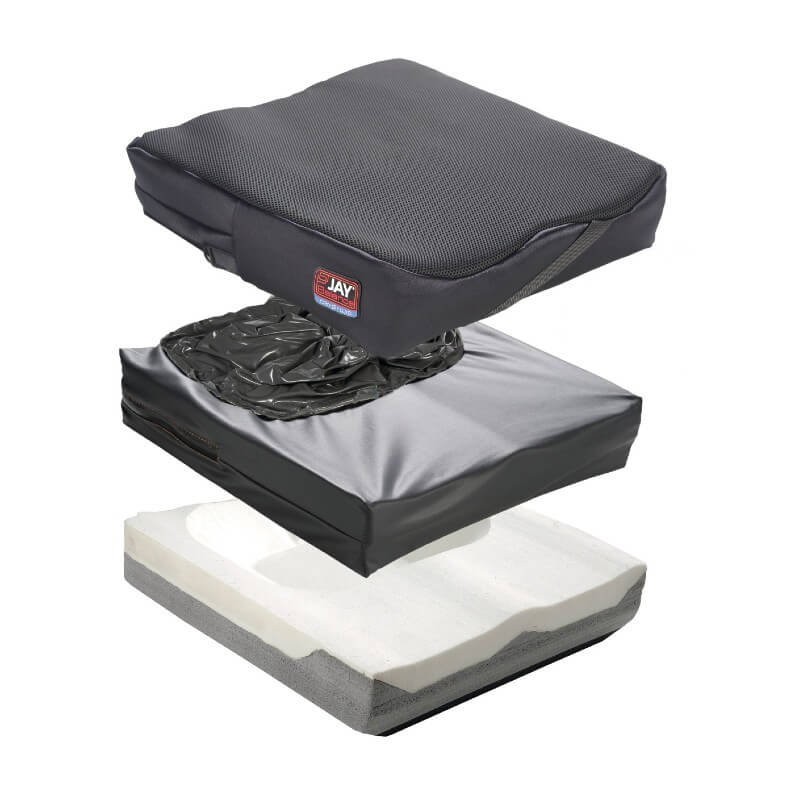sdílet:
Take it offline!
This Education in Motion resource is also available as a printable PDF.
Stažení PDF
If you missed it, check out Part 1 of this blog. Part 1 focused on which factors are involved in seating microclimate and who is most at risk, including a difficult clinical lesson in my earlier days so you don't make the same mistake.
Assessment Implications
It can be challenging to incorporate microclimate review into a postural and mobility assessment under inevitable clinic time pressures. Some testing methods used in research studies, like attaching sensors to a client's bottom to monitor skin temperature, are not typically practical. However, inclusion of low-tech methods can provide a good understanding of a client's microclimatic risk:
- Palpation of surfaces client is in frequent contact with before transfer out of equipment: e.g. seat, back, lateral supports, chest harness
- Interview techniques to investigate underlying causes, such as use of "5 Whys," asking more specific follow-up queries to vague answers
- Observation of signs of heat and moisture buildup in the client, including review with client while sitting in the equipment and direct visualization of skin where possible during mat assessment
Interventions to Manage Microclimate in Wheelchair Seating
Pressure relief techniques
Research into microclimate is still evolving. Many of the studies thus far have been relatively small. Current best practice recommendations are to take steps to allow "recovery periods of keeping the skin dry and cool and/or allow recovery periods between phases of [small blood cutaneous blood vessel] occlusion."7
That is, one of the most powerful approaches in managing microclimate is the same approach integral in skin management more generally – use of 24-hour program to relieve contact with seating surfaces. When clients shift position to relieve contact to body surfaces for pressure reduction, they also allow the area to cool8. Some examples include:
- Use of tilt and recline to shift pressure
- Weight shifting techniques in sitting, such as leaning far forward on a table or wheelchair push ups
- Getting out of the wheelchair to alternative surfaces, such as a break in stander or in lying
- Active exercises to move pressure from high risk areas
Wheelchair seating configuration
Firm Postural Back Support
Consider a configurable, highly adjustable firm backrest for clients who use a wheelchair daily for long periods. A correctly sized, properly adjusted firm back support may reduce overall surface contact levels, and thereby increases airflow. The J3 back support range has height adjustment, 20 degrees of angle adjustment, and a huge variety of sizes and contouring options for a specific fit.
Support Surface Materials
Approach cushion materials analytically. The impact of wheelchair seating materials on thermoregulation features is an entire topic of another forthcoming EIM blog. Some considerations:
- The J3 backrest range and many of the JAY seat cushions come with 3D spacer microclimatic covers specifically designed to promote airflow.
- Terry toweling can provide subjective comfort and absorb moisture, therefore this can be a good option particularly if there is a second cover to swap out as needed.
- Cushions with perforated channels promote airflow through the base itself, such as the JAY Lite.
- Viscoelastic (memory) foam absorbs vibration and often feels subjectively comfortable, but holds heat, so may not be the best option if heat buildup is a significant concern. Some viscoelastic cushions have a compound mixed into the top visco foam layer to help cool the user.
- Air inserts with discreet chambers, like the air insert in a JAY Balance may also assist with airflow.
Cooling-Specific Technology

Some seating has specific technology to improve cooling. This includes the new JAY Balance with Cryo™ Technology. This cushion has the comfort and positioning advantages of a high risk level cushion, but can reduce skin temperatures for up to seven hours. This happens via a fluid pad designed specifically to transit heat away from the body.
The J3 TC back has compact battery-powered technology to provide heat and cooling to the user.
Like all aspects of a custom configured wheelchair and seating system, working collaboratively with the client is the best path to achieving well-considered and client-directed outcomes.